Space

Gravity works, it is a dominant force in physics, but at the very large and very small scales it holds a lot of mysteries left to be solved. Foe example, when it comes to stars in young star clusters the dynamics in these crowded environments cannot be simply explained by the pull of gravity.
After analyzing Hubble Space Telescope images of star cluster NGC 1818 in the Large Magellanic Cloud, a satellite galaxy of the Milky Way, researchers at the Kavli Institute for Astronomy and Astrophysics (KIAA) at Peking University in Beijing found more binary star systems toward the periphery of…
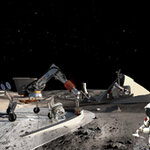
First some exciting news about space-flight. Then I'll finish with a followup (and speculative) reflection on our recent multiple encounters with space rocks.
= NASA's NIAC: New and Innovative Advance Concepts =
Soon I will be off to participate as an advisor in the Spring Symposium of NASA-NIAC in Chicago. NIAC is a far-out, little research program at NASA, trying to enable big things in space. NIAC stands for NASA Innovative Advanced Concepts. Its budget last year was only $5.5M, or about 3/100ths of 1% of the $18 billion NASA budget. Its charter is to Change the Possible…
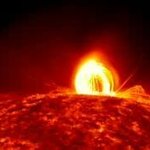
The Sun's eruptive events can change even more radically than the weather in Kentucky. Some eruptive events come just with a solar flare, while some provide additional ejection of solar material, a coronal mass ejection (CME). Some even involve complex moving structures in association with changes in magnetic field lines that loop up into the sun's atmosphere, the corona.
On July 19th, 2012, an eruption occurred on the sun that produced all three. A moderately powerful solar flare exploded on the sun's lower right limb, sending out light and radiation. Next came a CME, which shot off to the…

Sunspots on the surface of the Sun happen when magnetic fields rearrange and realign, forming dark spots Over the course of the last 48 hours, scientists watched a giant sunspot form - it has grown to over six Earth diameters across but its full extent is hard to judge since the spot lies on a sphere, not a flat disk.
The spot quickly evolved into what's called a delta region, in which the lighter areas around the sunspot, the penumbra, exhibit magnetic fields that point in the opposite direction of those fields in the center, dark area. This is a fairly unstable configuration that…

If you have seen pictures of the Moon, you see a giant ball of dust with astronaut footprints etched into the surface - but information garnered from missions such as NASA's 2009 Lunar CRater Observation and Sensing Satellite (L-CROSS) lunar-impact probe, along with more modern scanning technologies and precise measurements, are changing the perception it is all dry.
As little as five years ago, no one had detected water in the samples returned from the Moon. The advancement of instrumentation, such as secondary ion mass spectrometry and Fourier transform infrared spectroscopy,…
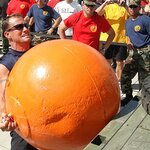
The Earth just got a few shots across our bow, what with a giant asteroid hurtling between us and the moon, and another (fortunately much smaller) space rock exploding over Russia, causing a surprising amount of destruction.
So what can we do about the solar system trying to bomb us? Fortunately, the Space Generation Advisory Council is on the case with its Move an Asteroid contest.
You're looking for the slightly nerdier Move An Asteroid contest next door.
The most recent winner, MIT grad student Sung Wook Paek came up with an ingenious idea: paintballs.
Now of…
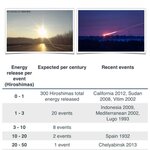
A shooting star brighter than the sun on the very day an asteroid flyby is predicted. A most remarkable coincidence. And to add to our amazement, the rock whizzing through the skies didn't illuminate a distant ocean or some remote desert, but rather showed its spectacle above one of the very few areas in the world populated by people driving dashcams around 24 hrs a day. No screenwriter would get away with such an unlikely scenario.
But how likely are meteor event like the one in Russia? What are the chances a similar event will occur this century? And what about even bigger events? What was…
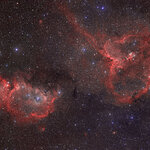
My Heart and Soul is in space. There is not a shred of doubt about that. Since I was a little girl my head has been turned in an upward direction - often both physically and mentally. Come Valentine's Day and my thoughts go straight into space.
The Heart and Soul Nebulae side by side in Cassiopeia. Credit: John Corban&the ESA/ESO/NASA Photoshop FITS Liberator
My heart is in hard science and I uphold until death that space saves lives. If you cannot imagine that without some help you can take a quick look at one example from NASA spin-offs that literally helps hearts pumping. An…

What a spectacular coincidence! A meteor hitting Earth on the day the asteroid 2012 DA14 is passing close by!
When I was contemplating what kind of natural disasters I should throw in the scenarios for my Planet Earth: Extreme Beauty - Extreme Danger I was considering a big asteroid NOT missing the target for once. I chose a major blast from the Sun instead as that is something that happens more frequently anyhow, at least at certain points in time of the Sun spot cycle.
The meteor as seen by one of the car cameras that seems so popular in Russia. From the video below.
Today, we've all hear…

In the year 1006 a new star was seen in the southern skies and widely recorded around the world. It was many times brighter than the planet Venus and may even have rivaled the brightness of the Moon. It was so bright at maximum that it cast shadows and it was visible during the day. More recently astronomers have identified the site of this supernova and named it SN 1006. They have also found a glowing and expanding ring of material in the southern constellation of Lupus (The Wolf) that constitutes the remains of the vast explosion.
It has long been suspected that such supernova remnants may…